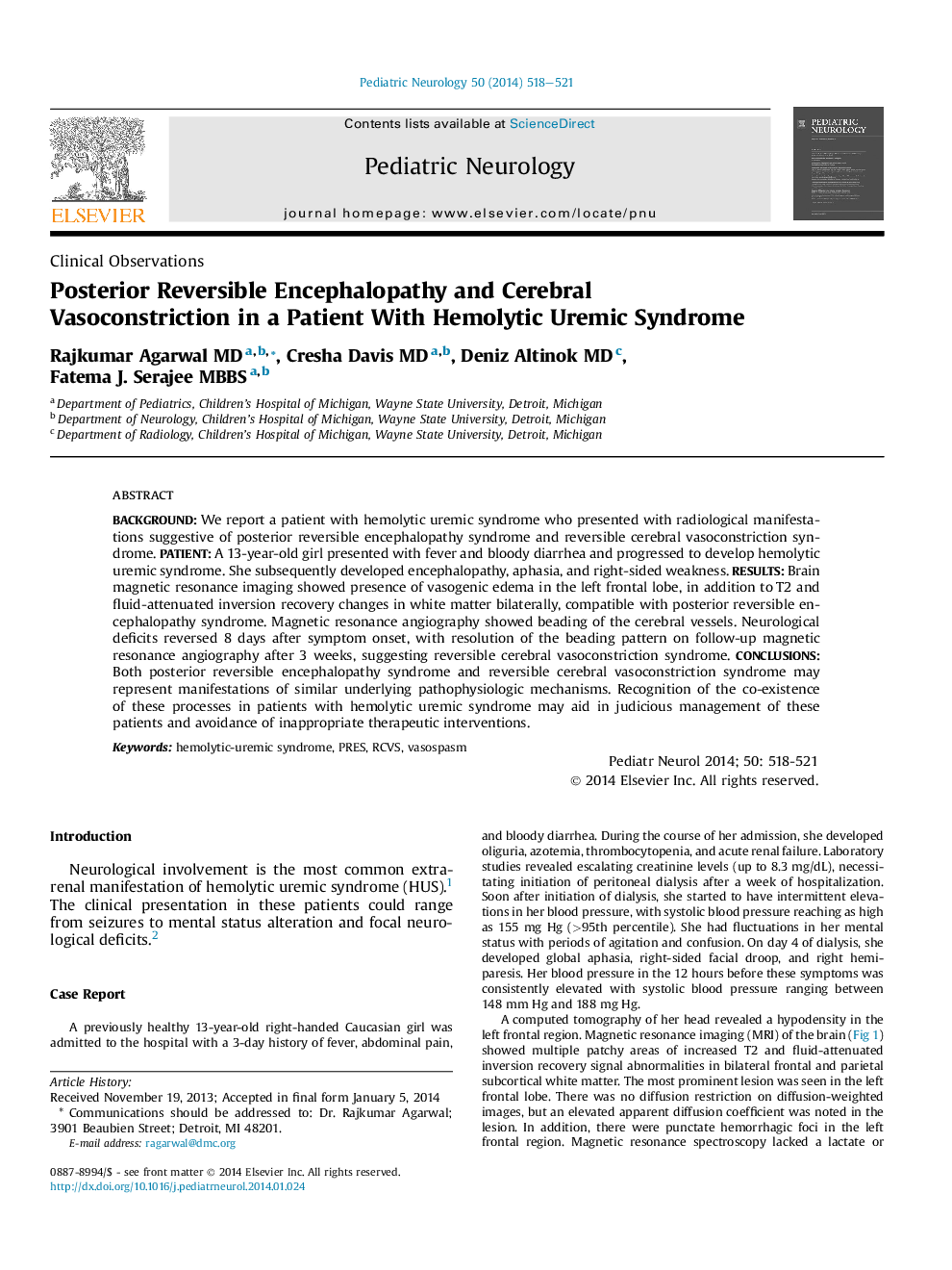| Article ID | Journal | Published Year | Pages | File Type |
|---|---|---|---|---|
| 3085000 | Pediatric Neurology | 2014 | 4 Pages |
BackgroundWe report a patient with hemolytic uremic syndrome who presented with radiological manifestations suggestive of posterior reversible encephalopathy syndrome and reversible cerebral vasoconstriction syndrome.PatientA 13-year-old girl presented with fever and bloody diarrhea and progressed to develop hemolytic uremic syndrome. She subsequently developed encephalopathy, aphasia, and right-sided weakness.ResultsBrain magnetic resonance imaging showed presence of vasogenic edema in the left frontal lobe, in addition to T2 and fluid-attenuated inversion recovery changes in white matter bilaterally, compatible with posterior reversible encephalopathy syndrome. Magnetic resonance angiography showed beading of the cerebral vessels. Neurological deficits reversed 8 days after symptom onset, with resolution of the beading pattern on follow-up magnetic resonance angiography after 3 weeks, suggesting reversible cerebral vasoconstriction syndrome.ConclusionsBoth posterior reversible encephalopathy syndrome and reversible cerebral vasoconstriction syndrome may represent manifestations of similar underlying pathophysiologic mechanisms. Recognition of the co-existence of these processes in patients with hemolytic uremic syndrome may aid in judicious management of these patients and avoidance of inappropriate therapeutic interventions.
